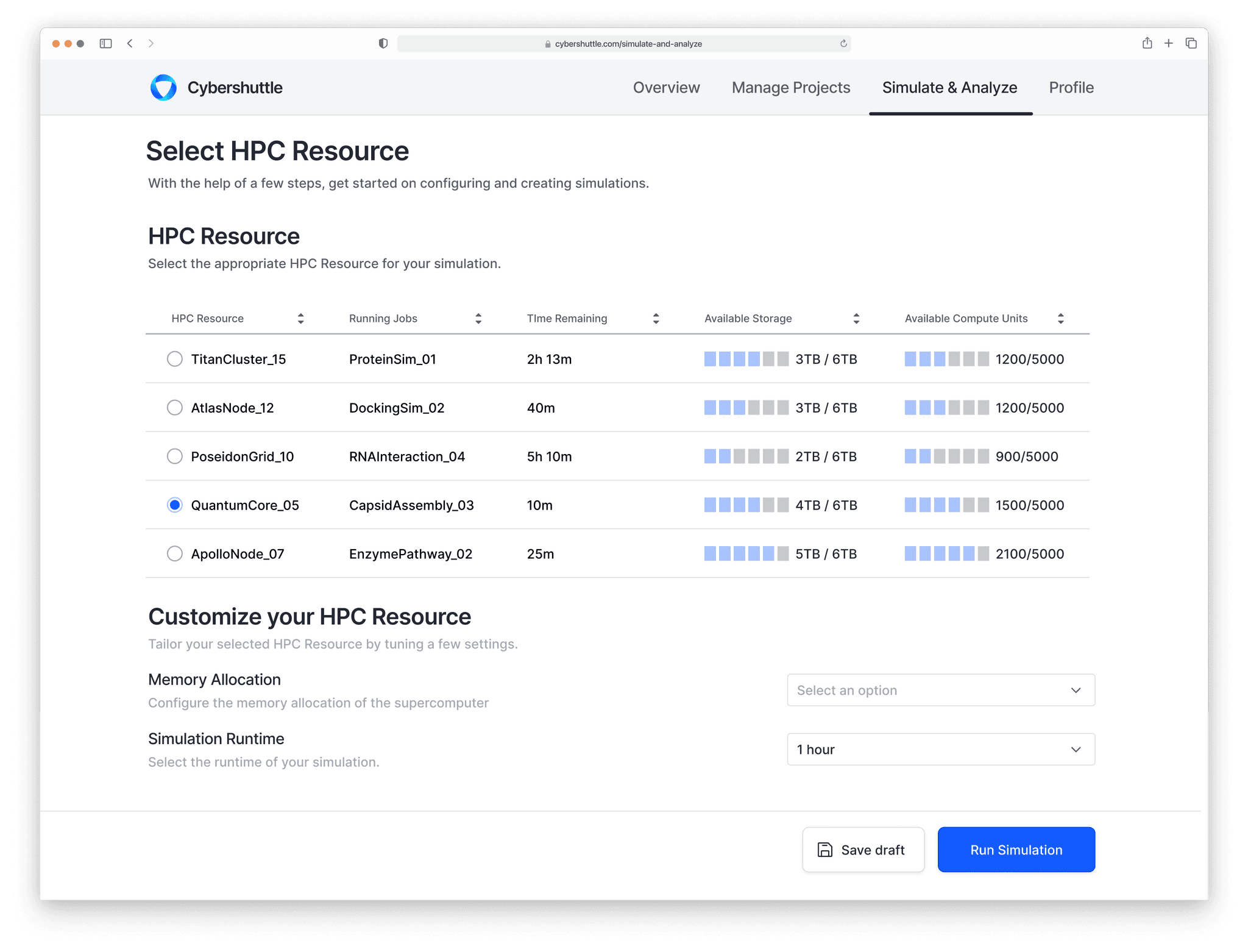Cybershuttle
A digital platform that makes it 2x faster for biophysicists to conduct research work.
Healthcare
B2C
Professional Project

OVERVIEW
Powered by grants from the National Science Foundation (NSF), Cybershuttle is a joint project between Indiana University and biophysicists at the University of Illinois, Urbana-Champaign (UIUC).
DURATION
3 months
TEAM MEMBERS
2 UX Designers, 3 Developers, Project Lead
MY CONTRIBUTION
UX Research
Ideation
UI Design
PROBLEM
Biophysicists are not happy because their research work takes time.
Biophysicists study how living things work, but their research work slows down because there is no way to manage their teams and they have to constantly switch between their computers and remote supercomputers.
SOLUTION
Cybershuttle. A platform that speeds up their research work by helping them…
Manage multiple projects and teams
Seamlessly connect with supercomputers
Let's explore how Cybershuttle optimizes the research experience of biophysicists.
IMPACT
Accelerated research cycles; increased collaboration work; and scalable impact across other scientific domains
Cybershuttle is expected to increase research speed by 30%, improving the pace of new discoveries.
It enables biophysicists to easily collaborate with scientists globally, paving the way for larger projects.
Cybershuttle’s core framework of interconnectivity could be adapted for use in other scientific fields.
LEARNINGS
Grasping and understanding scientific domain knowledge was a bit challenging at first.
The project required displaying a large amount of information, necessitating a seamless user experience.
Designing a site map established an effective navigation flow for the Cybershuttle platform.
PROCESS




